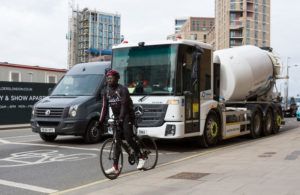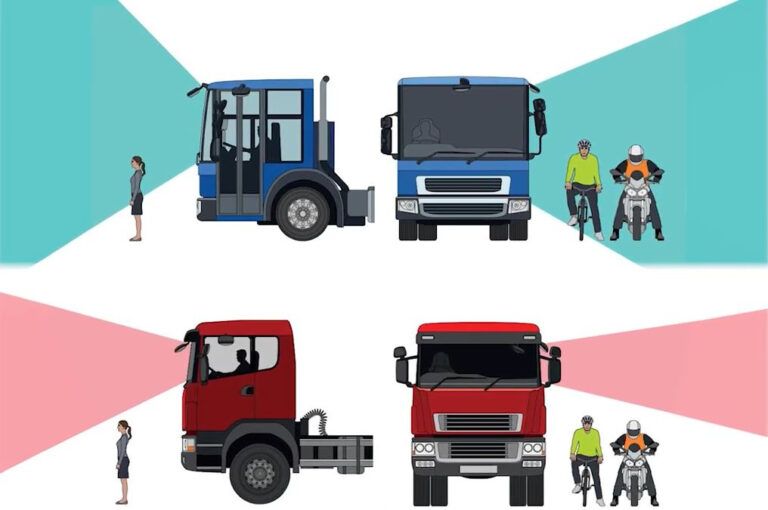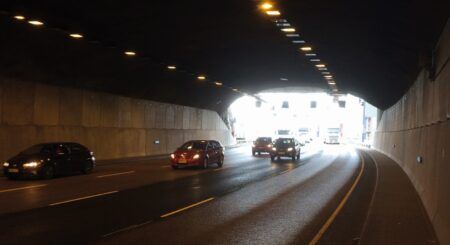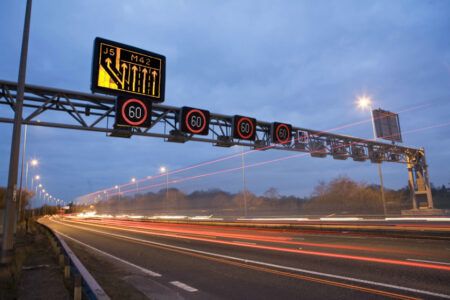A world-leading scheme to remove the most dangerous Heavy Goods Vehicles (HGVs) or trucks from the UK capital’s streets has been launched by the Mayor Sadiq Khan, Transport for London (TfL) and the London Councils.
Large trucks are disproportionately involved in fatal collisions. While they account for just 4% of the overall miles driven in London, between 2015 and 2017, HGVs were involved in 63% of fatal collisions involving cyclists and 25% involving pedestrians. The first-of-its-kind Direct Vision Standard (DVS) tackles road danger at its source by minimising truck blind spots which contribute to many deaths and serious injuries. Based on how much a driver can see directly through their cab windows, the unique star system rates HGVs over 12 tonnes from zero (lowest) to five (highest). Trucks will need to meet a minimum ‘one-star’ rating by the time enforcement begins to enable them to operate in London, or will need to fit ‘Safe System’ measures to improve the vehicle’s safety.
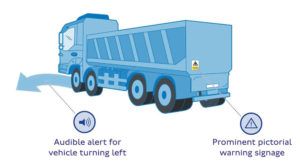 From this week, operators can apply for a HGV Safety Permit ahead of enforcement beginning on October 26 next year. Truck operators who fail to meet these new minimum safety standards and obtain a permit will be issued a penalty charge for driving in the capital. The Direct Vision Standard will operate 24 hours a day, seven days a week and will be enforced within the Greater London Boundary. Owners of vehicles rated ‘zero-star’ will need to improve the overall safety of their vehicle by fitting a ‘Safe System’ to reduce the risk it presents to people walking, cycling and riding motorcycles before enforcement begins. These include a camera monitoring system, a noise alert when turning left, and detection sensors. Fitting the ‘Safe System’ will not improve a vehicle’s DVS star rating, but will bring the safety standard of the vehicle up to allow operators to apply for a Safety Permit.
From this week, operators can apply for a HGV Safety Permit ahead of enforcement beginning on October 26 next year. Truck operators who fail to meet these new minimum safety standards and obtain a permit will be issued a penalty charge for driving in the capital. The Direct Vision Standard will operate 24 hours a day, seven days a week and will be enforced within the Greater London Boundary. Owners of vehicles rated ‘zero-star’ will need to improve the overall safety of their vehicle by fitting a ‘Safe System’ to reduce the risk it presents to people walking, cycling and riding motorcycles before enforcement begins. These include a camera monitoring system, a noise alert when turning left, and detection sensors. Fitting the ‘Safe System’ will not improve a vehicle’s DVS star rating, but will bring the safety standard of the vehicle up to allow operators to apply for a Safety Permit.
The DVS is part of TfL’s Vision Zero commitment to tackle the number of people being killed and seriously injured on London’s roads. TfL worked closely with manufacturers, operators and stakeholders to develop the DVS. At the same time as the DVS is brought into force, requirements for the London-wide Low Emission Zone (LEZ) will be tightened so that heavy vehicles across the capital are subject to the tough Ultra-Low Emission Zone (ULEZ) standards. These changes show the vital role the freight industry will play in both tackling road danger and cleaning up the city’s polluted air.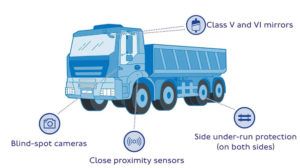
“I’m proud of our world-leading plans to remove the most dangerous lorries from London’s streets. So many of the tragic deaths on our roads involve HGVs and this new scheme will help save lives,” said Khan. “The scheme has gone live and operators now have 12 months to upgrade their fleets, helping make our streets much safer for people walking and cycling.”
TfL’s head of transport strategy and planning, Christina Calderato, said, “Today we have reached a major milestone in a scheme that will save people’s lives and play a significant role in helping us achieve Vision Zero. Transforming the safety of HGVs will dramatically reduce road danger for people walking and cycling.”